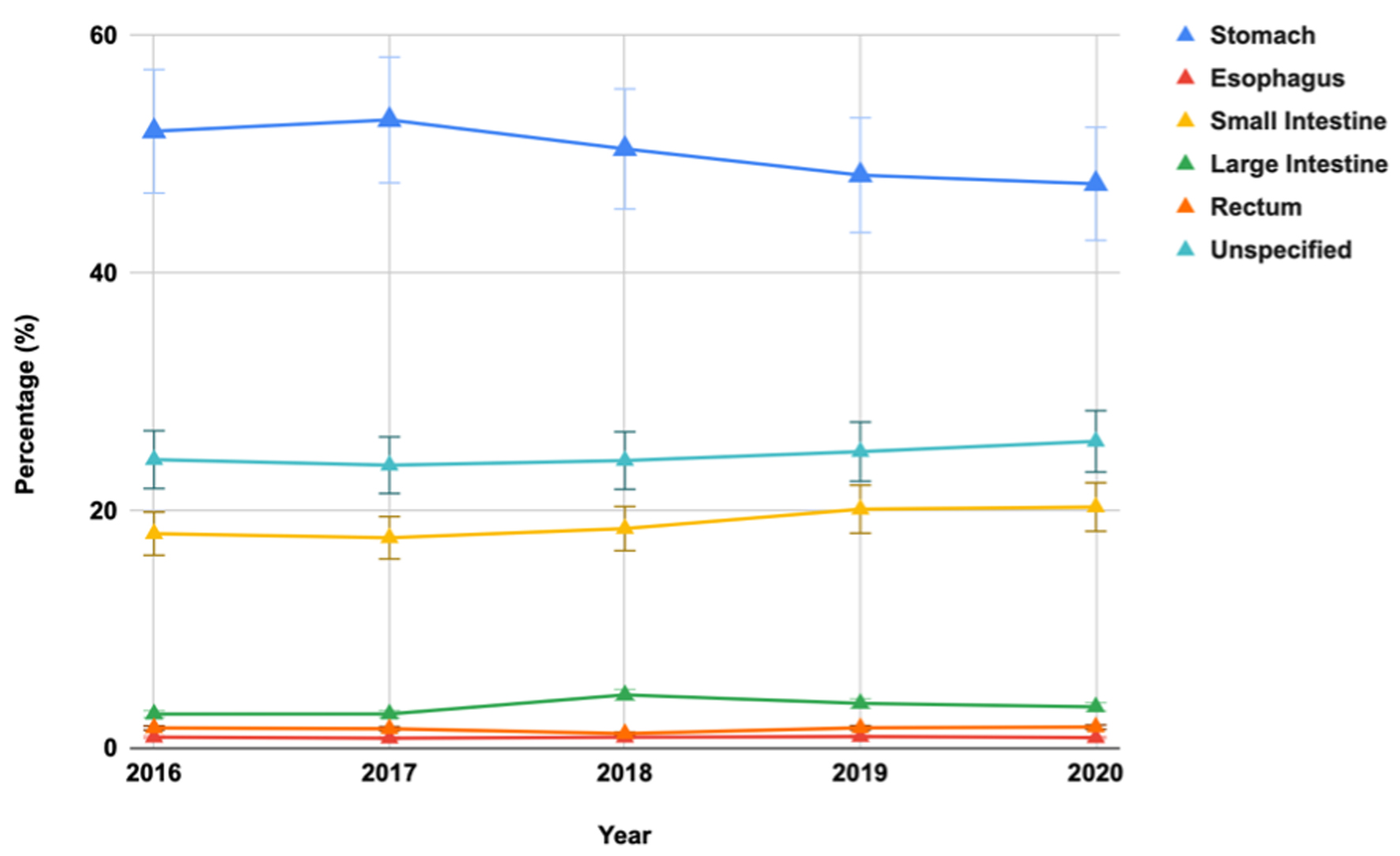Trends and Financial Burden of Gastrointestinal Stromal Tumors in the United States: A Comprehensive Analysis of United States Hospitalizations
DOI:
https://doi.org/10.14740/gr2009Keywords:
Gastrointestinal stromal tumors, Epidemiology, Outcomes, Inpatient mortality, Total hospital charge, Length of stayAbstract
Background: Gastrointestinal stromal tumors (GISTs) are associated with a substantial economic burden to the healthcare system despite their relatively low incidence and prevalence compared to other more common malignancies. This study aimed to evaluate trends in GIST-related hospitalizations, inpatient mortality, and the financial burden of GISTs in the United States.
Methods: The National Inpatient Sample (NIS) database from 2016 to 2020 was used to identify adult hospitalizations (age > 18 years) with a primary diagnosis of GIST. A multivariate logistic regression along with Chi-square and t-tests was performed using SAS 9.4 software to analyze inpatient GIST-associated mortality, inflation-adjusted total hospital charge (THC), and length of stay (LOS) during the study period.
Results: The study analyzed 48,690 hospitalizations (49.2% female, mean age 64.2 years, 38.2% elective admissions) with a primary diagnosis of GIST between 2016 and 2020. Annual GIST-related hospitalizations increased from 2,645 in 2016 to 11,565 in 2020 (P = 0.1208). The most common tumor location was stomach (48.5%), followed by small intestine (18.7%), large intestine (3.6%), and rectum (1.6%). There was a non-significant reduction in inpatient mortality from 4.16% in 2016 to 3.29% in 2020 (P = 0.807). Overall, 36.2% of patients had THC between $10,000 and $20,000 (36.5% in 2016 vs. 34.7% in 2020, P = 0.0001), and 9.8% of patients had a THC > $40,000 (8.3% in 2016 vs. 12.6% in 2020, P = 0.0001). Furthermore, 61.5% of patients had LOS of fewer than 5 days (59.16% in 2016 vs. 61.39% by 2020, P = 0.0001), and 38.5% had LOS of 5 days or more (40.84% in 2016 vs. 38.61% in 2020, P = 0.0001). The proportion of GISTs treated with endoscopic resection has remained stable with 13.02% in 2016 and 13.01% in 2020 (P = 0.08). Additionally, the proportion of surgical excisions decreased from 26.8% in 2016 to 21.4% in 2020 with a statistically significant trend (P = 0.004).
Conclusions: GIST-related inpatient mortality between 2016 and 2020 has remained stable, and endoscopic and surgical interventions have become more common for the management of GISTs. This has been accompanied by a significant rise in overall inflation-adjusted hospitalization costs in the study period. These findings highlight the need for continued optimization of care and resource allocation for GIST management.

Published
Issue
Section
License
Copyright (c) 2024 The authors

This work is licensed under a Creative Commons Attribution-NonCommercial 4.0 International License.









